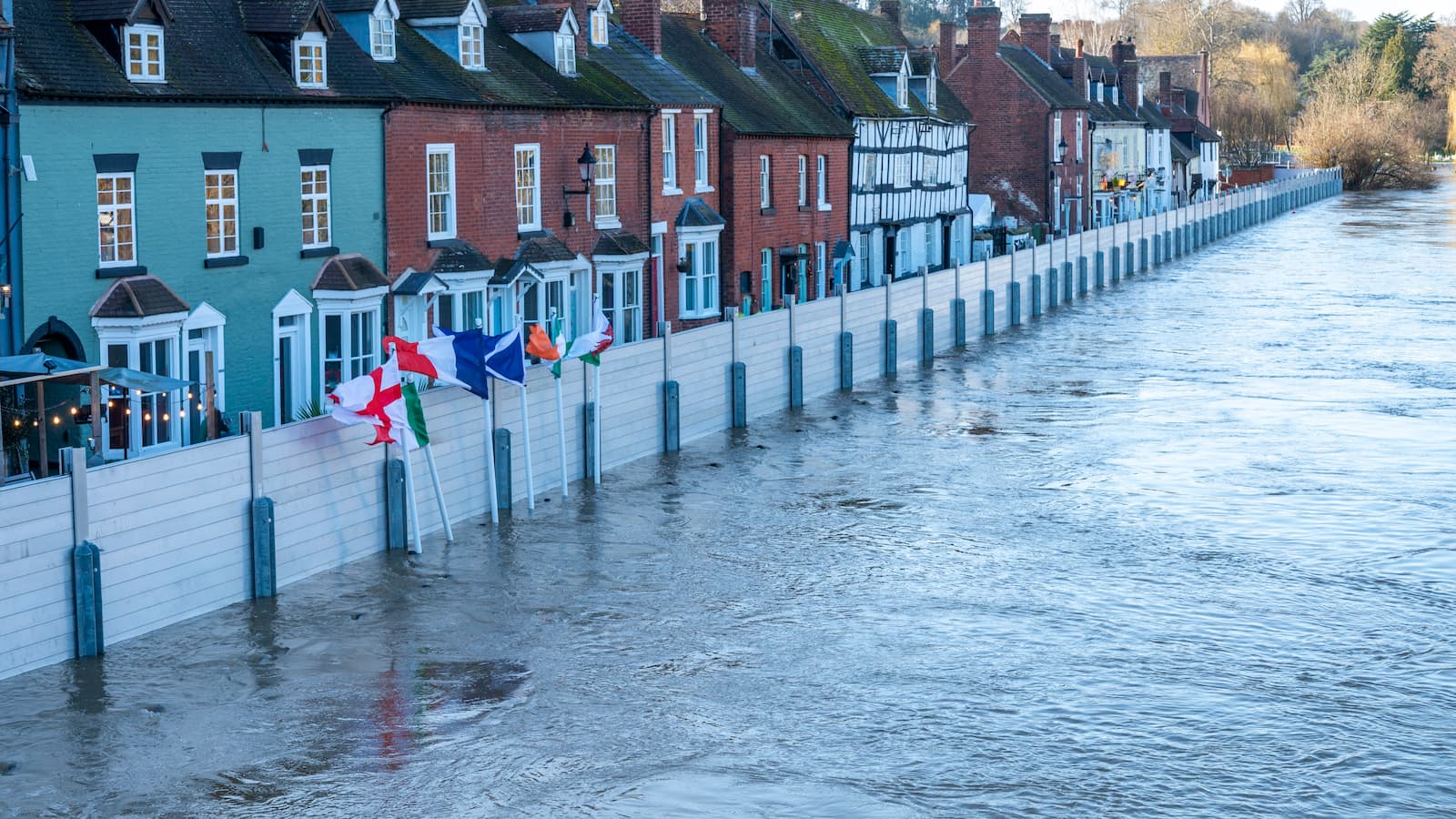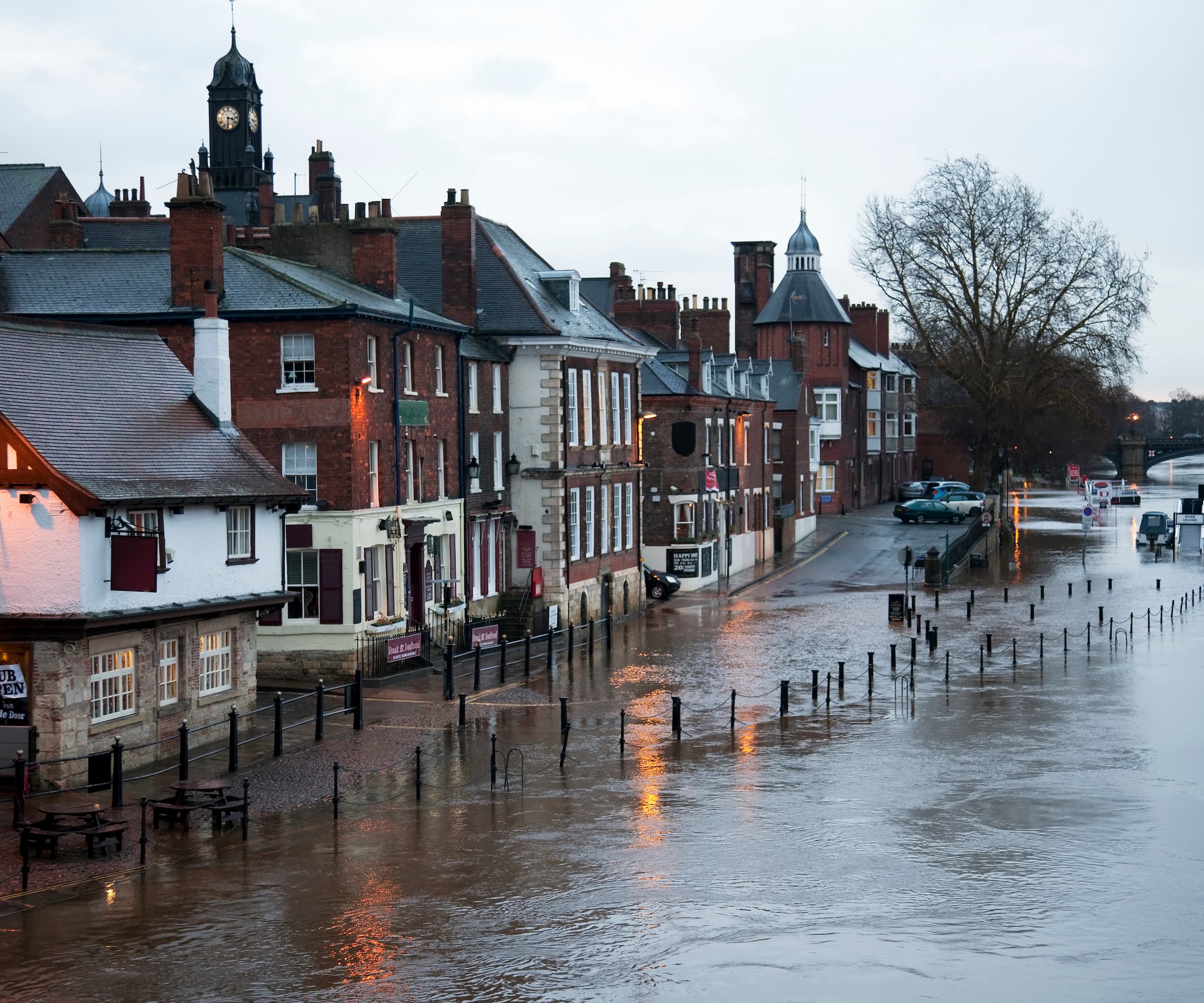With rising flood risks could this £2.65bn plan save your property?
A major funding boost aims to protect 66,000 properties. Find out if your area could benefit

A record £2.65 billion will be spent on strengthening the UK’s flood defences, aiming to protect over 66,000 homes and businesses from extreme weather events.
With climate change increasing the frequency and severity of flooding, the Government has announced this two-year investment as part of its "Plan for Change" strategy.
The funding will support the construction of 1,000 new flood defence projects while prioritising maintenance and repairs on existing structures. This will supposedly benefit 52,000 properties through new defences and another 14,500 through improved maintenance so if you don't have a flood-proof home you could benefit from this Government scheme.
Protecting homes from the rising risk of flooding
Flooding has become a growing concern for homeowners and property developers alike.
According to a recent study by MyBuilder.com, 11% of Brits feel anxious about the safety of their property due to rising water levels. Regional concerns vary, with 19% of homeowners in the South West expressing the most worry, followed by 16% in the East of England.
Flood Resilience Minister Emma Hardy stated: “The storms this winter have devastated lives and livelihoods. Under our Plan for Change, we are investing a record £2.65 billion to build and maintain flood defences, protecting lives, homes, and businesses from the dangers of flooding.”
Experts agree that increased urban development has contributed to worsening flood risks. Benjamin Birkhead, a design technician and Sustainable Drainage Systems (SuDS) specialist at Marshalls, explains: “The growth of infrastructure, such as car parks and shopping centres, has seen the ground in towns and cities sealed and become ‘waterproofed.’
Get the Homebuilding & Renovating Newsletter
Bring your dream home to life with expert advice, how to guides and design inspiration. Sign up for our newsletter and get two free tickets to a Homebuilding & Renovating Show near you.
"In rural areas, rainwater naturally soaks into the ground, but urban areas lack these permeable surfaces. Finding ways to encourage natural permeation is crucial in mitigating flood risk.”

Benjamin Birkhead, a member of the Marshalls Design Team, specialises in value-engineered permeable paving solutions. With a background in mechanical engineering and research in novel wastewater treatment technologies, he brings an engineering perspective to Sustainable Drainage Systems.
Key projects to strengthen flood defences

Some of the major projects receiving funding include:
- Bridgwater Tidal Barrier Flood Defence Scheme (Somerset) - £43 million
- Derby Flood Risk Management Scheme "Our City Our River" - £35 million
- Beales Corner Flood Defence Project (West Midlands) - £2 million
- Poole Bridge to Hunger Hill Flood Defences (Dorset) - £3.5 million
- Property flood resilience schemes in Leicestershire, Derbyshire, and Nottinghamshire - £2.5 million
In addition, funding will prioritise stalled projects, with £140 million earmarked for 31 schemes that are ready for immediate delivery.
What homeowners and builders can do
Beyond government-funded flood defences, there are practical steps that homeowners and builders can take to make properties more flood-resilient.
Andy Simms from MyBuilder.com suggests checking flood history and signing up for early flood warnings. “While most British homes are safe, high water levels and flash flooding are undeniable realities. For those living in high-risk areas, it’s crucial to take preventative steps now,” Simms advises.
According to Birkhead, permeable paving is an effective way to manage surface water and prevent flooding at a property level. “This paving option helps mitigate water runoff while also preventing water pollution. Unlike traditional hard landscaping, permeable paving allows rainwater to filter through rather than overwhelming drainage systems.”
Other flood resilience measures include:
- Installing waterproof storage for valuables and documents
- Replacing carpets with tiled flooring to minimise flood damage
- Using stainless steel external doors for added water resistance
- Raising plug sockets in flood-prone areas
The Environment Agency has also announced 34 new natural flood management projects, which will use wetlands and sustainable drainage to increase flood resilience.
As extreme weather events become more common, this record-breaking investment aims to protect homeowners and businesses while also encouraging better resilience at an individual and community level.

Andy has almost a decade of experience on the front line in construction as a multi-trader, managing teams and project management working on a number of construction projects.

News Editor Joseph has previously written for Today’s Media and Chambers & Partners, focusing on news for conveyancers and industry professionals. Joseph has just started his own self build project, building his own home on his family’s farm with planning permission for a timber frame, three-bedroom house in a one-acre field. The foundation work has already begun and he hopes to have the home built in the next year. Prior to this he renovated his family's home as well as doing several DIY projects, including installing a shower, building sheds, and livestock fences and shelters for the farm’s animals. Outside of homebuilding, Joseph loves rugby and has written for Rugby World, the world’s largest rugby magazine.
